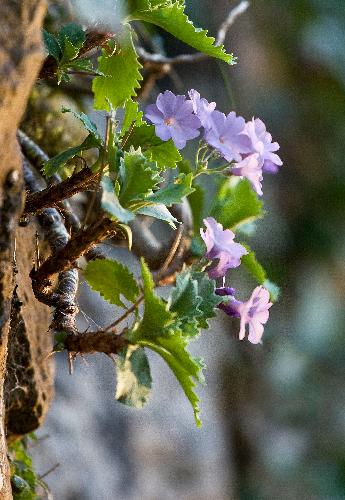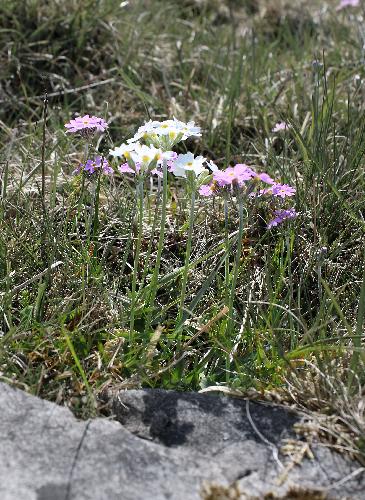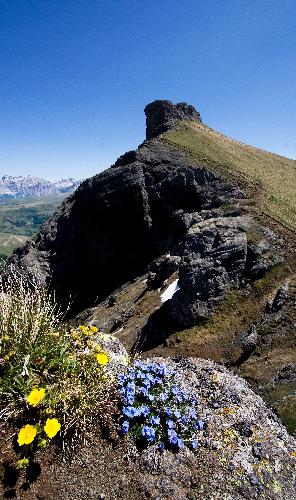| JOURNAL 2020 |
| North Craven Heritage Trust |
There have been many articles and books about this most interesting individual, and individual he most certainly was. I do not intend to relate anything in particular about his travels, his paintings, his gardening, plant collecting and his individual lifestyle, but rather reflect on how much has changed in the century since his death and what has happened to his plants and his introductions and how different life is today from the life he led.
A hundred years after his death there have been dramatic changes to his home of Clapham and to his gardens and plantings in and around the village. There have been some changes to the various places he visited and changes to the institutions he knew and became part of. I have been fascinated to try and imagine the reaction he would have had to these many changes, some of which would have shocked, charmed, amused and even perplexed him.
Let us start in Clapham at his home, Ingleborough Hall. I had the fortune to live there for some time whilst working at the present Outdoor Centre as a teacher. But mine was not the extravagant lifestyle that RJF would have had, and extravagant it was. The most memorable fact I recall from my time there, introducing young people to the house, the village and the exciting world of hills and caves, is that Ingleborough Hall had an icehouse. This had a large chamber which ‘the men’would fill with ice taken from the lake in winter and store until needed. One use for this ice was to make sculptures to place in the drawing rooms in summer to cool them so that the ladies would be more comfortable. For more than half a century children from all over the north of England have used RJF’s home as a base for experiential learning. Reginald’s reaction would have been one of bemusement.
The grounds of Ingleborough Hall were the home to his garden, made famous in his book ‘My Rock Garden’ [1]. The present grounds are much smaller than when he lived there, and his rockery now lies in an adjoining private property. It is still there and has recently been renovated. Unfortunately, his plantings have almost disappeared, but there are a few trees and shrubs which remain. Most notable are Viburnum farreri var candissimum and Carpinus turczaninowii, a small Hornbeam he collected in China. Juniperus recurves var coxii is planted nearby but was collected in Burma and presumably planted a short while after Farrer’s death.
Some of Farrer’s plant introductions can be found in the village of Clapham, particularly on the site of his nursery, now a private house. There are many plants of Viburnum farreri throughout the village and the closely related Viburnum “Bodnantense Dawn” is present which has V.farreri in its parentage. One interesting plant is a Cotoneaster which is not only found within the village, but is often planted as a shrub on verges, roundabouts, supermarket gardens and other places where its ease of culture and lack of maintenance are significant features. This is Cotoneaster franchettii var sternianus which RJF introduced from China in 1914, collected as F1325. This plant is often named simply Cotoneaster sternianus and both names are in use. So one of Farrer’s introductions is planted all around the country! Perhaps he would have chosen some other plant to fill this niche.
Above the village the Nature Trail, the Cliff Garden and the gorge above the lake hold many plants. The Cliff Garden is visible from the Trail but very few Farrer plants remain. The area is now quite overgrown, mainly with trees, but intriguingly some plants survive. There are plants of Iberis and Arabis which may be more recent introductions, but there are also a few plants remaining of Primula marginata (Figure 1). These have a stem of up to a metre in length and have a significant age, perhaps even contemporary with the great man himself and may even have been collected by the him. There are other plants of interest there: some specimens of Ramonda in vertical crevices, and along the lakeside there are plantings of narcissus, some of which may be from the early 20th century.
The gorge at the head of the lake was selected by RJF as a suitable site for his Rhododendrons. It is situated alongside the North Craven Fault where the limestone to the south is juxtaposed with much older Silurian rocks to the north. The great advantage of this is the acidic nature of the Silurian strata which is needed for the cultivation of Rhododendrons and Bamboos. The size of some of the Rhododendrons suggests that they were RJFs own plantings. However, the presence of some of his Burmese introductions such as Rh. arizelum and Rh. caloxanthum are likely to be the product of plantings by his fellow collector in Burma, Euan Cox, in the early 1920s. There have been other plantings such as those by Charles Graham of Giggleswick, who cared for the shrubs in the 1970s. The whole area is overshadowed by larger trees and the remaining rhododendrons need more light. They have been in that situation for over forty years. We cannot be sure what RJF would have made of the Cliff Garden and the gorge at the present time, but I can safely assume that the state of both sites would be quite different had he been still around!
There are two other Farrer plants which need an excursion onto the slopes of Ingleborough. The first is the product of RJFs remarkable discovery which he reported in the Journal of Botany in 1894: quite something for a 14 year old. This was only the second recording of a small white flower, then known as Arenaria Gothica, now Arenaria norvegica subsp anglica. I have found it at a few stations between Clapham and Selside, but it seems to disappear then reappear some time later. The other plant has eluded me. It is a hybrid saxifrage named as Saxifraga x farreri. It is a cross of Saxifraga hypnoides and Saxifrage tridactylites. Perhaps some further exploration of the steeper slopes of Ingleborough will result in its rediscovery, unless I am trampled to death by the many Three Peakers who will be ascending Ingleborough close by.
There are many other places to visit both in Europe and Asia where RJF went plant hunting and many of the plants he described in his books are quite accessible but may require some effort. In his book ‘Among the Hills’ [2] he visits the Col de Mont Cenis. He relates facts about the journey in terms of transport or rather the lack of it, and it quickly becomes apparent how arduous and no doubt costly these excursions were. I visited the site a few years ago and many of his recordings are still around. But the great prize, Eritrichium nanum known as ‘The King of the Alps’ eluded me. RJF was intoxicated by this plant, referring to it as ‘Old Woolyhead’ after the very downy nature of the foliage. However, there were many other fine alpines including Purple saxifrage, of Penyghent fame, and some fine forms of Primula farinosa. One interesting fact about the Col de Mont Cenis is that it is indeed a Col but there is no Mont Cenis! This intrigued RJF.
His book on the Dolomites [3] reveals more accessible areas where he travelled and collected plants. I have visited the area several times in the winter, as it is the largest skiing area in the world, and on several occasions in the summer following in his footsteps. The plants are still there, including Old Woolyhead, and it is probably one of the most scenic and botanically exciting places in Europe. The footpath, named the Bindelweg, close to the Pordoi pass is an easy excursion to view the plants and scenery. Here I have found Old Woolyhead and many more alpine plants including the Snowdon Lily, Lloydia. Eritrichium nanum captivated RJF and he collected it mercilessly. I wonder what his reaction would be to the ethics of present day collecting. The plant itself has intense blue flowers and a downy, almost felted foliage. I must take care unless I metamorphose into the florid descriptions of the man himself.
‘Of this there is no need to speak, to those who have seen it; no profit, but vain temptation only, in speaking of it to those who have not. For no eye of faith is quite keen enough to gulp the whole glory of the King of the Alps, as you see those irresistible wads of silky silver nestling into the highest darkest ridges of the granite, and almost hidden from view by the mass of yellow- eyed little faces of a blue so pure and clear and placidly celestial that the richest Forget-me-not by their side takes on a shrill and vulgar note’. [4]
There were very few plants to excite Farrer as this one. However, an albino form had been occasionally found and on my most recent visit to the area, I decided to visit the Monzonital above Predazzo where RJF had found a white form along with lots of other wonderful alpines. On the Col de Monzonital there is now a refuge and on the crest of the ridge plenty of eritichium but not a white one in sight. There were other plants of interest particularly ranunculus and gentian, with the added bonus of refreshment at the refuge, built since RJF was there. There were other constructions around the col. Farrer had been there c1911 and five years later the col was the front line in WW1. There are trenches still there, preserved for posterity, and some of the original barbed wire used by the warring factions both Italian and German. It is difficult to think of RJFs reaction to one of his prime collecting sites being on the front line, blown apart by the troops on either side. There are other sites worth visiting all described vividly, sometimes very vividly, in RJFs book The Dolomites. particularly Misurina, The Rolle Pass, the Serai de Sottoguda and Passo Falzarego
There are other places to visit such as Kunming in China and its environs where RJF and William Purdom explored around 1914-15 and Up Burma where he ventured with Euan Cox in 1918-20.The former has become more and more accessible, but unfortunately Up Burma is still virtually impossible.
There is finally one plant which captivated RJF, Primula farinosa. It grew in profusion around the head of the lake in Clapham and is the emblem of the Yorkshire Dales Society. At the local show in Clapham RJF would offer a prize of sixpence to any child who could find a white form. He had some success with white flowered plants from a field near Wennington, had found a poor form near Sulber Nick on the slopes of Ingleborough but the prize eluded him. A couple of years ago whilst wondering over the limestone pavements above Clapham I found a pure white form, high above the gorge and Cliff Garden and immediately thought of RJF (Figure 2). If I had been able to show him those beautiful white flowers for the first time there may have been a smile of sorts develop across his face.
RJF was a prolific writer, both reference books and travel accounts and also contributed articles to gardening magazines. Perhaps today he would have been another Monty Don or Alan Titchmarsh. Or on reflection as he probably shared some of the qualities of Doc Martin ,these could have been a serious handicap in his development as a programme presenter.
However, the world of alpine plants remembers him fondly and with a degree of reverence. The Alpine Garden Society promotes the cultivation of alpine plants and holds seminars, conferences and shows for growers of alpine plants. RJF is still remembered by them at each of their stand-alone shows when the premier exhibit is awarded a Farrer medal
There is one fact about RJF which needs some clarification - his birthright. When Gardeners Question Time visited Clapham, the Eric Robson visited my garden to learn more about RJF and to see some of his introductions which I have manage to cultivate with some difficulty. I related to him the story of Farrer’s hair lip and cleft palate which had left him with a speech impediment. One person compared his voice to that of a jay. Whilst at Oxford the speech impediment meant that he had some problems in conversation, so much that one individual commented that he was that most unusual of phenomenon: a Yorkshireman with an inferiority complex. Of course he was born in London! And there is no back door into that club.
References
- Farrer, R.J. ‘My Rock Garden’ (Arnold, 1907)
- ‘Among the Hills: a book of joy in high places’ (Headley, 1911)
- ‘The Dolomites: King Lavrin’s Garden’ (Black, 1913)
- ‘The English Rock Garden’ (Jack, 1919) page 335

Figure 1

Figure 2

Colde Mont Cenis